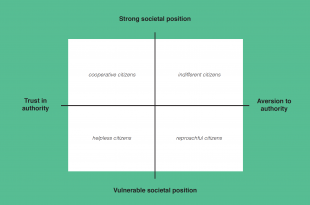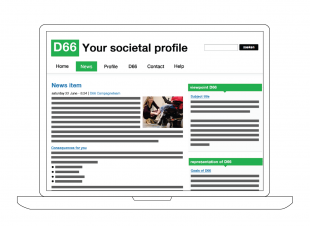Overview
During the Dutch national elections of September 2012, I became aware of how frequently political opinion polls fluctuated. Moreover, one week before the elections, many people still had no idea who to vote for and quickly changed their opinions and preferences about political parties, often based on a minor incident.
What was causing this behaviour? Where does this increasing lack of party affiliation come from? What can designers do to change this behaviour or to change political parties?
These questions kept haunting me. As a result, I transformed them into a mission that became the topic of my graduation project. This mission aimed at discovering how design can contribute to political involvement in order to establish a better relationship between political parties and citizens. How a designer creates products to change and influence the outcome of the predicted future can be highly valuable in the political domain. Although this field of design is still quite unknown, I hope this project will be an inspiration to many other designers and people who work in the political domain.
Approach
How to apply the design process in the political domain?
The goal of the project was to design a product that will increase the involvement of citizens in the political party D66 by the year 2018. The process started with an extensive analysis of the domain ‘the relationship between political parties and citizens’, including developments and trends in society and politics and the principles of democracy and psychology.
In the context vision, two dimensions were found in the characteristics of the Dutch population. These two dimensions were translated into four different types of citizen states that will become more apparent in the future.

The context vision
A statement was formulated that represents the response of the political party towards the context vision of the future party-citizen relationship and expresses the desired goal in this context vision.
- I want cooperative citizens to experience a relationship that empowers them in their societal position and participation in the political domain.
- I want indifferent citizens to experience being motivated by the party, yet stay independent and in control of their participation
- I want helpless citizens to experience the relationship with a political party as being supported and having a grip on society.
- I want reproachful citizens to experience being supported and taken seriously by a political party, but to keep control of their independence
Result
How to engage in a meaningful relationship with citizens?
A relationship was formulated for each type of citizen state, according to an analogy and five possible forms of interaction between a party and citizens. The result was a clear framework showing the qualities and forms of character a political party must have to establish a relationship with a specific type of citizen.

The relation model
How to design the intended relationship?
Four concepts, one for each type of citizen state, were devised to illustrate how a political party could use service design to establish the intended relationship. Each concept was then developed further using the relation model.
• Concept 1 – ‘Theme platform’
This concept comprises a small organisation, based on a specific local theme. This platform will be founded by people who are strongly involved with a specific theme and include local key figures and citizens, such as citizens, members of D66, and local politicians.

• Concept 2 – ‘Participation service’
This concept comprises a service of D66, which allows citizens to gain political guidance and approval when having a new idea or initiative that requires political influence on existing policies.
• Concept 3 – ‘Your societal profile’
This concept is an application that will show all societal and political developments that may influence the citizen’s well-being or position in society. Through this medium, the party is able to offer a constant and stable source of information and give advice on how citizens should deal with these developments.

• Concept 4 – ‘You have the floor’
This concept is an application that enables D66 to involve citizens in the development of new ideas and policies. The service starts with a survey regarding the topic and gives citizens the opportunity to submit their views and ideas. After which, D66 will give feedback by presenting the new plans or policies based on the citizens’ input.




